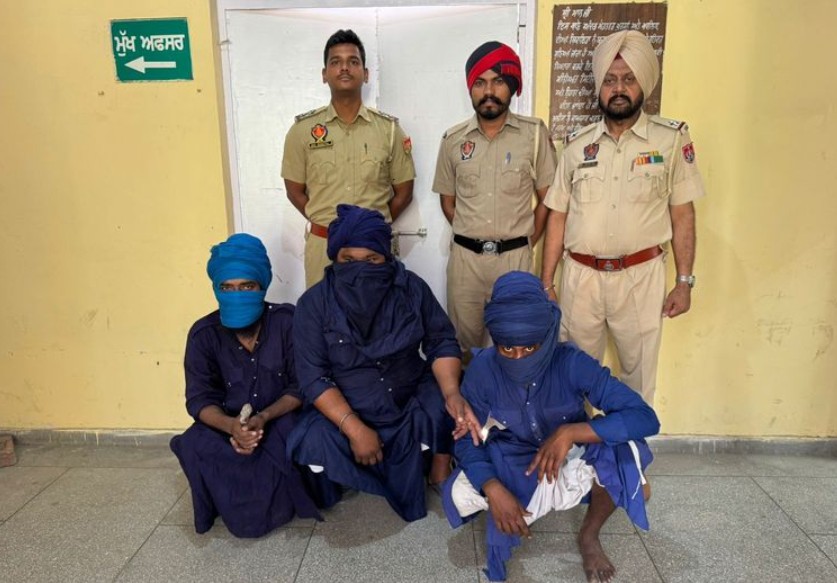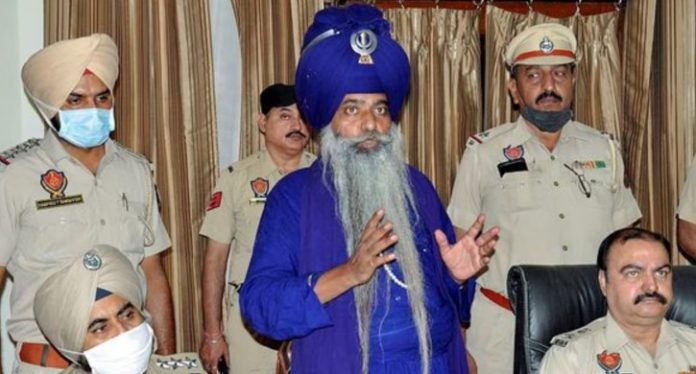In a development that has sent ripples through both the revered spiritual circles and the determined ranks of law enforcement across Punjab, three individuals, each identifying as a member of the venerable Nihang Sikh order, have been apprehended by Nabha police. The charges are grave: attempted extortion from a local businessman. This incident, stark in its allegations, thrusts into sharp relief the persistent and intricate challenges authorities face in their unwavering commitment to upholding law and order, especially when those accused of criminal acts are associated with long-standing traditional religious institutions.
The unfolding drama began in Nabha, a town steeped in history and known for its royal legacy and significant religious landmarks within the Patiala district. According to preliminary reports released by the Nabha police, the complaint originated from a prominent local businessman, whose identity remains protected for security reasons. He alleged that three men, clad in the distinctive deep blue robes and adorned with the traditional weaponry characteristic of the Nihang sect – such as the sharp chakram and gleaming sword – had approached him with an illicit demand for a substantial sum of money.
The businessman further claimed that these demands were veiled in implicit threats, effectively creating an atmosphere of palpable intimidation. Responding with commendable swiftness to the complaint, Nabha police immediately launched a comprehensive investigation. This led to the meticulous identification and subsequent apprehension of the three accused Nihangs. While specific details concerning the exact nature of the alleged threats or the precise monetary sum demanded by the trio have not been fully disclosed by the police, the charges of extortion unequivocally point to a coercive and unlawful attempt to procure funds. The arrests, authorities confirmed, were executed following a thorough investigative process, which included the meticulous verification of the businessman’s detailed claims and potential surveillance operations.
The incident, though geographically confined to Nabha, carries a far more expansive and profound significance due to the identities of the individuals involved. The Nihang Sikhs embody a revered warrior tradition within Sikhism, instantly recognizable by their iconic blue attire, historical armaments, and their unwavering adherence to the fundamental Khalsa traditions meticulously established by Guru Gobind Singh Ji. Historically, these formidable warriors played an indispensable role in the valiant defense of Sikh gurdwaras and the steadfast protection of the broader Sikh community against various external aggressions.
Their renowned martial prowess and profound spiritual devotion have indelibly carved a unique and deeply respected niche for them within Sikh history and the collective popular imagination. However, in contemporary times, while the vast majority of Nihang groups steadfastly continue to uphold their spiritual and martial heritage in a peaceful and exemplary manner, there have unfortunately been sporadic, isolated instances where certain individuals or rogue factions, purporting to be associated with the order, have engaged in activities that regrettably deviate sharply from their cherished religious tenets and accepted societal norms. Such isolated incidents, despite their limited scope, invariably attract considerable public attention and regrettably raise uncomfortable questions concerning accountability and the unwavering supremacy of the rule of law.

For law enforcement agencies, navigating situations involving individuals from revered traditional religious groups who stand accused of criminal offenses presents a complex and multifaceted challenge. There exists an exceptionally delicate equilibrium that must be meticulously maintained between the imperative of upholding the law with absolute impartiality and the profound necessity of respecting deeply held religious sentiments. Any perceived heavy-handedness in police action can, unfortunately, be easily misconstrued, potentially igniting protests or fueling distressing allegations of unfairly targeting specific religious communities.
Conversely, any perceived failure to act with decisive resolve can lead to a lamentable breakdown of law and order, simultaneously eroding public trust in the fundamental fairness and efficacy of the justice system. In Punjab, a state where religious identity is profoundly and intricately interwoven with both the social fabric and the political landscape, such sensitive situations demand exceptionally careful handling, an acute sensitivity to cultural nuances, and an unyielding adherence to due process. The Nabha police’s commendable swiftness and decisive action in this specific case, predicated squarely upon a credible complaint and a thorough investigation, strongly suggests an unwavering commitment to ensuring that no individual, regardless of their religious affiliation, traditional status, or social standing, is deemed to be above the law.
The broader issue of alleged criminal activities, particularly instances of extortion, continues to cast a long shadow over public safety and significantly undermines business confidence throughout Punjab. Attempts at extortion, irrespective of whether they are orchestrated by sophisticated organized gangs or opportunistic individuals, invariably create an atmosphere of pervasive fear, particularly for the countless small and medium-sized businesses that form the backbone of the state’s economy.
Such incidents fundamentally erode the sense of security that is absolutely crucial for vibrant economic activity and can regrettably deter much-needed investment. The state government, under the resolute leadership of Chief Minister Bhagwant Singh Mann, has consistently and vociferously vowed to aggressively tackle both crime and corruption, repeatedly asserting a “zero tolerance” policy towards all forms of illegal activity. This specific arrest, involving individuals associated with a venerated traditional order, serves as a significant litmus test for this declared commitment, powerfully demonstrating that law enforcement agencies are indeed prepared to take decisive action against criminal conduct, irrespective of the perpetrators’ social standing or specific religious affiliation.
Moreover, this incident inevitably prompts a period of deep introspection within the Nihang community itself and, by extension, among broader religious institutions across the state. While it is undeniably true that the regrettable actions of a few individuals should never be allowed to unjustly tarnish the otherwise sterling reputation of an entire, revered order, such incidents nonetheless necessitate a robust process of internal accountability and the implementation of stronger, more effective measures to actively prevent the potential misuse of a revered religious identity for purely criminal purposes.
Mainstream Sikh organizations and prominent religious leaders frequently confront the delicate challenge of drawing a clear and unambiguous distinction between genuine religious practices and the criminal acts perpetrated by a misguided few. Upholding the inherent sanctity and unwavering integrity of religious institutions absolutely demands continuous vigilance and a clear, unequivocal stance against any deviation from established moral principles and legal statutes. The vast majority of Nihangs are widely respected for their profound devotion and their strict adherence to a rigorous code of conduct; consequently, isolated incidents of alleged criminality are typically met with immediate and forthright condemnation from within the community itself.
The consistent stance articulated by the Punjab government has been one of unwavering commitment to maintaining law and order with absolute impartiality, acting without any semblance of fear or favor. In numerous public pronouncements, government officials have emphatically stressed that all criminal acts will be pursued and dealt with strictly according to the letter of the law, entirely irrespective of the background, status, or affiliation of the perpetrators.
This particular arrest forcefully reaffirms that crucial commitment, effectively sending a clear and unambiguous message that while religious freedom and deeply rooted traditions are profoundly respected and protected, they unequivocally do not confer immunity from criminal prosecution. The government’s paramount priority remains the unflinching assurance of the safety and security of all its citizens and the tireless endeavor to foster an environment where businesses can flourish without the debilitating specter of fear, intimidation, or extortion.
In conclusion, the arrest of three Nihangs on charges of attempted extortion in Nabha stands as a significant and multi-layered event that brings into sharp focus several critical aspects concerning law and order within Punjab. It powerfully demonstrates the local police’s commendable capability to act with decisive swiftness upon receiving credible complaints, thereby reinforcing the fundamental principle that no individual stands above the rule of law. Furthermore, it underscores the ongoing and complex challenges inherent in combating crime, even when such criminality regrettably involves individuals associated with deeply respected traditional groups.
While this incident may cause some understandable unease within various communities, it simultaneously presents a crucial opportunity for deeper introspection and constructive dialogue within the Nihang community and beyond, fostering a renewed commitment from all stakeholders to uphold ethical conduct and ensure that justice is served. The ongoing investigation into this specific case will undoubtedly shed further light on the precise motivations and operational methods of the accused, and its eventual outcome will be closely observed as Punjab continues its determined efforts to cultivate a truly peaceful, secure, and crime-free environment for all its cherished residents.


